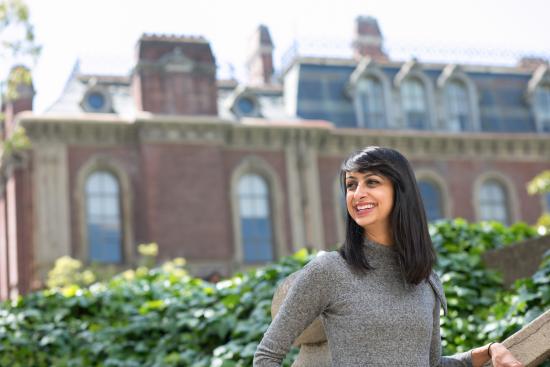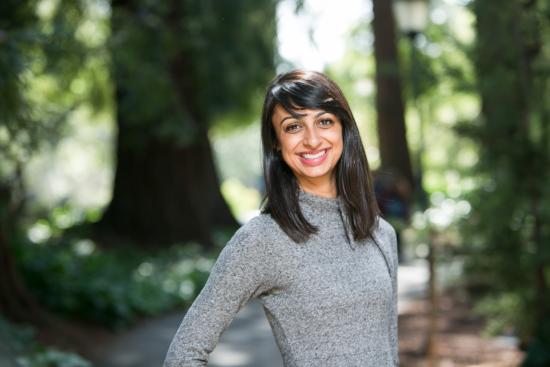Nisha Pathak graduated from the School of Information with a Master’s in Information Management and Systems in 2018. Prior to the I School, Nisha completed a Bachelor of Arts with double majors in Film and Television Production and Spanish Language and Literature from Boston University. At the I School, Nisha focused on UI/UX and product design. She currently works as an Associate Product Designer at Bain & Company.
Why did you choose the I School?
I chose the I School because I wanted a program that offered more than just a design curriculum. I was making a career change and wanted an education that would not only prepare me to become a strong designer but a professional who was empathetic to and able to communicate with other technical professionals. I also wanted a program that was two years long and not an accelerated one year program. Berkeley has so much to offer their students and I felt that in order to take full advantage of a graduate program and an environment like Berkeley, I would need more than one year to fully explore, research, and learn from everything that is offered here.
What is the I School’s advantage?
One of the I School’s biggest strengths is their ability to draw in an incredibly diverse student body. This diversity is not just limited to gender or race but it applies to skill sets, interests, and academic strengths amongst the students. This diversity creates a vibrant and collaborative environment where students can learn just as much from their peers as they do from the University. This is a rare quality to find in any graduate program and I attribute many of my successes and my personal and professional growth to the driven, motivated, and brilliant community at the I School.
An information challenge that intrigues me …
I love thinking about how to best present complicated information and datasets into clean, simple, and effective visualizations.
What was your favorite class?
It’s hard to pick just one, so several classes that I truly enjoyed were Information Visualization, Interface Aesthetics, Applied Behavioral Economics, Critical Making, and Global Product Development were among the most impactful classes for me in strengthening my design skill set.
- Information Visualization introduced me to an area of design I had never considered exploring before. It’s a subject that relies heavily on both your analytical and artistic mind to synthesize and organize data in way that visually represents the most important information.
- Interface Aesthetics was a primer in design for me and I loved learning about visual design, color theory, and visual blocking and how these areas impact a user’s relationship with a product. These areas are directly related to my career and have helped significantly in hackathons, interviews, projects and ultimately in landing my current role.
- Applied Behavioral Economics was a really interesting class that encouraged me to think about how information we use to build products can be used to influence behavior. Unless prompted to, we generally don't consider how our environment influences our decision-making processes or how behavioral economic principles can be used to initiate change. This class spends time teaching you how to think about the impacts your design decisions and products can make on the consumer.
- Critical Making (Jacobs Institute of Design Innovation): This was a great, hands-on class where you’re given access to a makerspace to build your own physical products. Here, I used laser cutters, 3D printers, and programmed Arduino boards to bring product ideas to life. This class gave me great insight into the processes surrounding designing physical products and how to apply a human-centered design approach to these tangible items.
- Global Product Development: This was an inaugural class at the Jacobs Institute where students had to apply for one of 25 seats in the class. We submitted an idea for a physical product we wanted to build by the end of the semester and the class focused on the iterative product design and development processes necessary to build a fully functioning prototype. My team, the Cycle Paths, built a new, safer set of bike lights. This class also traveled to Hong Kong and China over Spring Break where we were fortunate enough to visit design studios, production facilities, and startup accelerators ( PCH Innovation Hub, HAX Hardware Accelerator, and Seeed Studio). We also visited several universities including The Hong Kong Polytechnic University School of Design, Hong Kong University of Science and Technology (HKUST), and Tsinghua-Berkeley Shenzhen Institute (TBSI).












